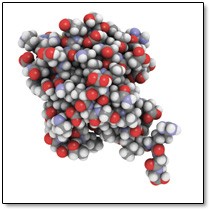Radical Energy

By Pam Sherwood
PolymersThe quest for previously untapped energy may have just led to a ubiquitous source — plastics. Engineers at Northwestern University in Evanston, Illinois, have identified a way to get energy from plastics, which are made of large molecules known as polymers. In fact, when subjected to mechanical stresses, such as by bending or squeezing, polymers have been shown to undergo homolytic cleavage, which produces small amounts of chemical energy. Common examples of polymers under mechanical stress include vehicle tires and the soles of athletic shoes. Although this phenomenon has been recognized for decades, the energy produced by polymers under mechanical stress has not been utilized in any significant way.
Polymer, derived from the Greek words poly (many) and meros (parts), refers to a large molecule composed of a long chain of smaller, repeated structural units. Scientists have shown that when a polymer is bent or squeezed, the bonds between the atoms within the molecule can break apart. When this results in the two electrons of a covalent chemical bond being redistributed with one electron going to each of the two atoms previously involved in the bond, it is referred to as homolytic cleavage. The result of homolytic cleavage is the generation of two atoms with unpaired electrons, known as radicals, which are highly reactive species.
Producing Clean Energy
When a polymer undergoes homolytic cleavage in the presence of water, the free radicals generated react with the water to form a substance called hydrogen peroxide (H2O2), which in turn can drive several types of chemical processes. Soft, spongy polymers perform best under these conditions. These spongy polymers can be considered solid-state chemical reagents that convert mechanical energy into chemical energy in a “clean,” environmentally friendly fashion. In fact, this method of collecting energy from polymers can be as efficient as coal-burning power plants.
Unfortunately, this same free radical producing reaction can occur when polymeric materials that are implanted in the human body (such as catheters and breast implants) stretch or bend. In these cases the release of free radicals in the body may increase health risks because of their ability to cause cellular damage and health problems.
Classroom Discussion
- What other common materials are made of polymers?
- What other clean energy sources are available?